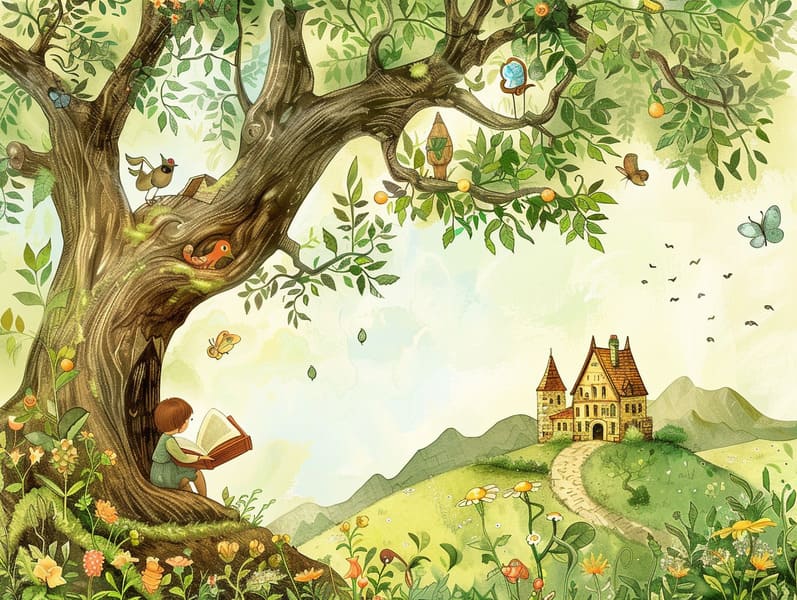The Journey of Children's Fairy Tales and Their Unending Wonder.
The Journey of Children's Fairy Tales and Their Unending Wonder.
Blog Article

Timeless fairy tales have enduring presence. These narratives have been told from one generation to the next ages before they were ever documented. They emerged from a variety of societies, including African traditions. They were initially told among grown-ups, often carrying themes and messages related to the societal norms and beliefs of the time.
The renowned Brothers Grimm, Jacob and Wilhelm, were among the first to collect many of these beloved fairy tales. Their anthology, "Grimm's Folk Tales," included classics like "The Story of Cinderella," "The Bread Crumb Trail," and "Snow-White and Rose-Red," which have since become cornerstones in the world of traditional fairy tales. Similarly, H. C. Andersen's fantastical fairy tales, such as "The Little Mermaid," and "The Little Duckling," have touched hearts worldwide, guaranteeing their place in the pantheon of iconic fairy tales.
Despite their historical roots, traditional fairy tales remain as significant as ever, especially as bedtime stories for kids. These magical stories are now available in many formats, including gorgeously illustrated books, captivating animations, and digital storybooks.
Their persistent charm can be ascribed to several delightful features:
Important Morals: Traditional fairy tales often convey important moral lessons. Narratives like "The Tale of the Boy Who Cried Wolf" teach the virtue of honesty, while "The Race of the Tortoise and the Hare" emphasize the qualities of persistence and humbleness. These tales offer kids clear distinctions between correct and incorrect, helping to shape their moral compass in a tender yet lasting way.
Warmth and Understanding: Old fairy tales frequently present heroines facing tests and troubles, motivating young readers to understand with their struggles and boost their triumphs. For instance, "Beauty and the Beast" teaches us the importance of seeing beyond looks to see the true being of a character, encouraging understanding and knowledge.
Cultural Knowledge: Many timeless fairy tales are deeply embedded in the cultural contexts from which they bloomed. Learning from these narratives can provide captivating looks into different backgrounds, building a sense of world understanding and respect.
Inventiveness and Imagination: The mythical elements in old fairy tales—magical beings—provoke children’s creative minds. These narratives move readers to magical realms, triggering fantasy dreams and a sense of curiosity that lasts a lifetime.
Ancient fairy tales are not only entrancing but also enlightening. They act as entrancing tools in building various brain and heart skills in the young. When traditional fairy tales are spoken out loud, they enhance linguistic abilities by offering new terms and intricate sentence structures. This practice also promotes auditory perception and attention, as children track the narrative, eager to see what happens next.
Furthermore, talking about the themes and characters of timeless fairy tales can advance problem-solving abilities and evaluative skills. Young readers are shown to find patterns, guess what will happen, and figure out cause and effect. These debates also encourage children say their thoughts and feelings, strengthening their emotional intelligence.
In today’s information age, the existence of internet fairy tales has made these narratives more available than ever. Online platforms and software provide extensive collections of old fairy tales that can be looked at or heard anytime, anywhere. Fairy tales narrated more info are particularly in demand, featuring an interactive method for young ones to savor these whimsical stories. Audio stories and spoken videos lead characters and settings to life, often complemented by charming harmonies and music that augment the tale journey.
The enduring charm of ancient fairy tales lies in their ability to shift to present eras while keeping their central values. Contemporary reimaginings of these stories often highlight more varied characters and modern settings, making them relatable to today’s audience. However, the core values of heroism, compassion, and truth remain unchanged, continuing to resonate with children of all ages.
Fairy tales also offer a sense of ease and closeness. They feature a ordered narrative with a clear beginning, middle, and end, often concluding with the termination of conflicts and the triumph of virtue over corruption. This dependability can be relieving for young ones, allowing a sense of sturdiness in an dynamic world.
Traditional fairy tales continue to fascinate and teach new generations, maintaining their majesty and meaningfulness in modern society. As children's bedtime stories, they extend a perfect blend of fantasy and learning, backing moral values, empathy, and creativity. The proliferation of online storybooks and the likability of fairy tales read out loud validate that these old stories remain within reach to new generations.
By preserving and divulging these fairy tales, we continue to recognize the rich tapestry of human imagination and cultural heritage. Whether you are seeing a colorful picture book, accessing a web collection, or listening via an read-aloud story, the radiance of ancient fairy tales is always within reach. These narratives emphasize of the everlasting spell of tales and its ability to unite us across centuries and lands.
Be it you are exploring a vibrantly illustrated book, viewing a electronic collection, or listening to an narrated book, the captivation of famous fairy tales is always within reach.
These stories remind us of the steadfast presence of fairy tales and its ability to bind us across eras and regions, casting a charm that captivates and teaches alike.